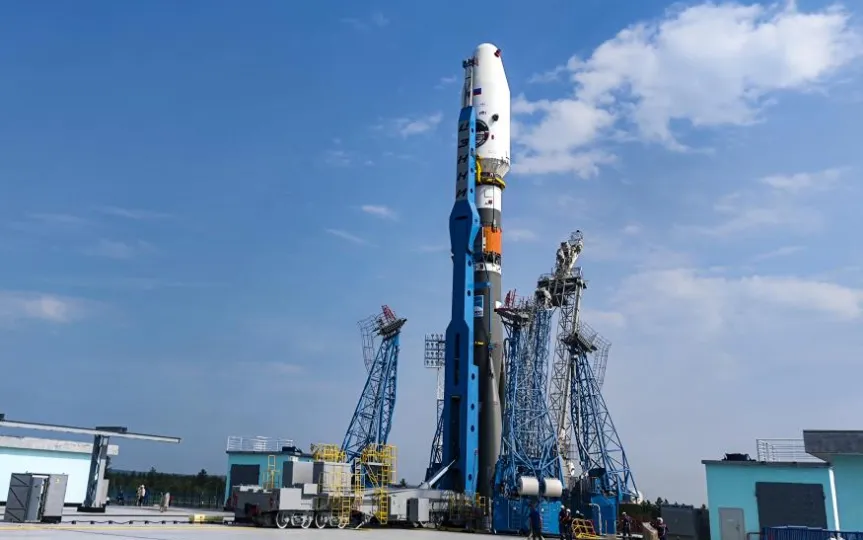Russia Launches Historic Mission to the Moon After 47-Year Hiatus
In an effort to regain its status as a major global player following the conflict with Ukraine, Russia is embarking on a new lunar mission. The Luna-25 spacecraft, carried by a rocket, will be Russia’s first expedition to the Moon since 1976. The primary objective of this mission is to successfully land the exploration vehicle on the Moon’s south pole, with hopes of uncovering water ice beneath the lunar surface. If you’re interested, you can watch the launch live by clicking here.
The Soyuz 2.1v rocket carrying the counter is scheduled to lift off from the Vostochny spaceport in eastern Russia at 19:10 EST. If successful, it would be the first spacecraft to make a soft landing on the Moon’s south pole. In 2020, NASA confirmed that water molecules were found in the sunlit parts of the Moon’s surface. The salvageable water could be a breakthrough in lunar exploration, providing life support, fuel (via extracted hydrogen) and even possible agriculture for future hearings.
Russia’s space travel also serves as a salve in its efforts to re-establish itself as a major world power, unaffected by Western sanctions on Ukraine in 2022. The craft’s name is even a callback to the Soviet space program: its last mission was Luna-24, which spent 13 days traveling to the Moon and back to collect samples in 1976. It refers to an era when the Soviet Union was the world’s undisputed superpower. suits President Vladimir Putin’s goals of projecting an image of Russian superiority.
Luna-25 also competes against India: the country’s Chandrayaan-3 mission launched on July 14 and entered lunar orbit this week. The Indian craft is scheduled to reach the South Pole of the Moon on August 23. Luna-25 will take five days to reach the Moon and is expected to spend five to seven days in orbit before landing. On this timeline, the Russian lander could reach the Moon around the same time as India’s, if not slightly earlier.
The ship is expected to conduct experiments – using its 68 kilos of research equipment – on the Moon for about a year. It includes a scoop that can be used to sample up to 15 cm (six inches) deep when hunting frozen water.
You can watch the kickoff stream below starting at approximately 7:10 PM EDT.




